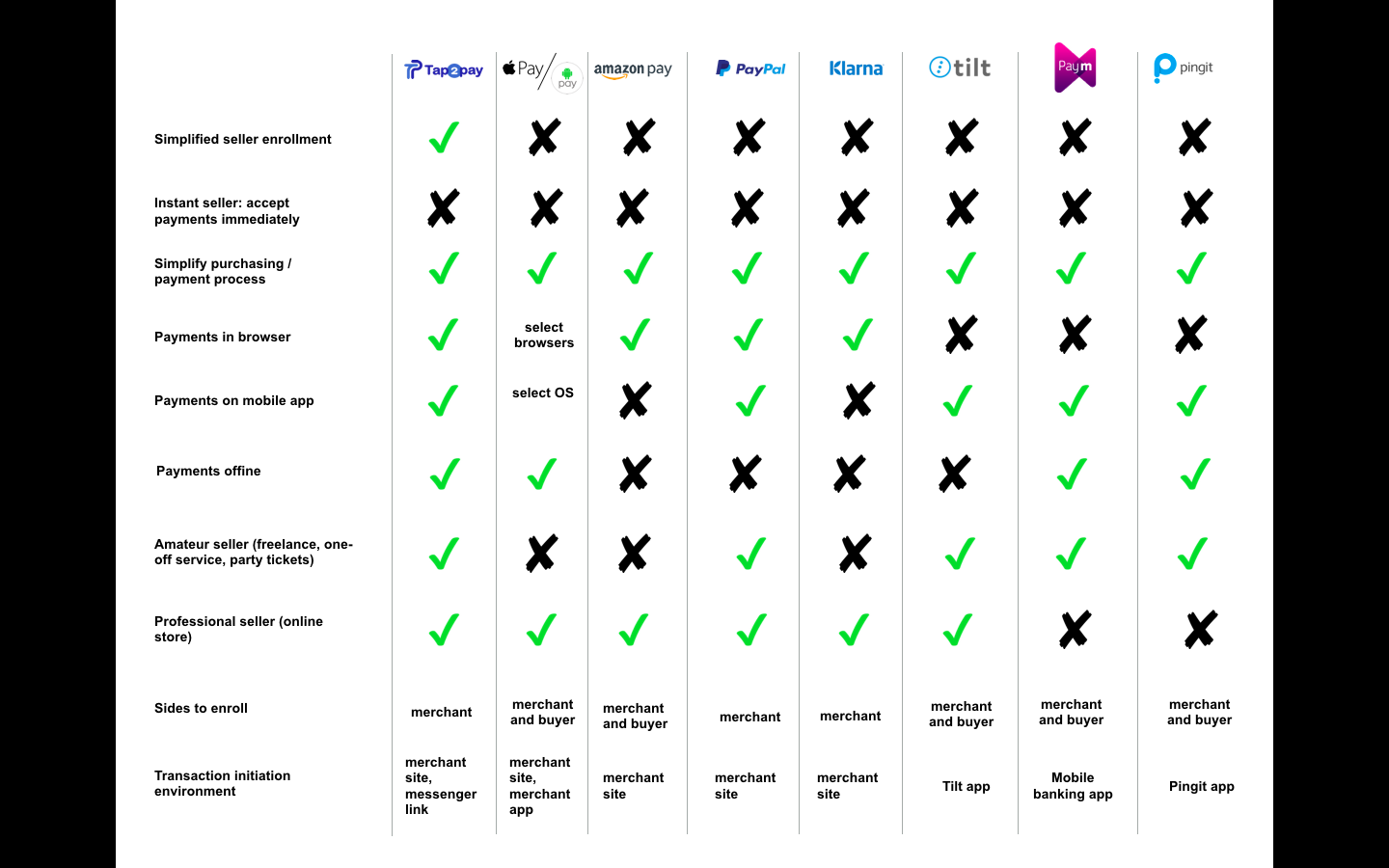Hey, Guys!
We continue to share our secrets with you. Let’s speak about Marketing Competitor Analysis. Here is Tap2Pay’s example:

How to make it?
Who are the other participants that are aiming at the same room in the market?
After identifying the value chain and your place in it (that we’ve already made in the previous post) you should pay attention to your competitors. A common mistake is that the founders are engaged in the market research only at the stage of ideas generation and stop monitoring what is happening in the industry at the later stages. This is a big mistake because the market is dynamic, and new players are constantly appearing on it. You do not need to be in the USA to know the faces of your local competitors.
The following tools can help you to know the Others:
Useful tools to follow your competitors’ news:
- Google Alerts— A tool for mention tracking: getting links to competitors’ sites; Monitoring the mentions of your company in social media; Monitoring of keywords.
- Product Hunt— Monitor how competitors interact with users, what feedback they receive.
- Topsy— Tool for social media, monitors competitors’ tweets.
- Marketing Grader— Tool for tracking the mentions: a quick analysis of the competitors’ activity in social media, the blogosphere, etc.
- Competitive Research & Keyword Research Gadget— Analysis of the competitors and keywords, aggregation of data on the competitors’ actions and strategies on the Internet.
- InfiniGraph— For tracking trends in social networks, compiling a full portrait of the audience.
- SEMRush— Keywords analysis.
- MetricsKey— Analysis of keywords on your site and competitors’ sites.
- SpyFu— Search for keywords according to the targets of your competitors.
- SimilarWeb— Site ratings and popularity analysis.
- Open Site Explorer — Search for all who refer to the site.
- SocialMention— Tracking mentions in the blogosphere, in social networks and video services.
- Popsters— A tool for analyzing the competitor’s content policy and assessing the engagement rate in competitor’s communities.
- Brand spotted — Monitors social media: shows reviews about competitors, useful for reputation management.
- Buzzsumo— Monitors popular articles on topics.
- Mentionmapp— Tool for finding user mentions on Twitter: builds an interactive mentions map.
Finally, the easiest way: to subscribe to the news, mailings, and groups in the social networks of your competitors. Then you will always be aware of what is new, what is changing and what they are working on at the moment.
Communication policy of your competitors.
We analyzed each of the competing companies. We focused on the following issues:
- A tagline is the main message, the formulation of value in one sentence. (Most of the competitors of Tap2Pay.me focus on speed, transparency, and reliability.) Large players lean on security and reliability, small ones – on speed and flexibility).
- Tone overall – the general tone of communication (informal / business and official, etc.).
- Social media tone – the tone of social media (What they post, Updates inside the company, inspirational images, news of the industry).
- Story message / Why? – why the company was created, the history of the business idea (often these stories form the basis of future publications and press releases).
- Target customer – whom the message of the company is oriented to (someone addresses the message to the owners of medium and small businesses as customers, someone – end users of the product).
- Values – the company’s values (simplicity and accessibility, a quick opportunity for growth and independence, etc.).
- Team – the team (number of people, key facts).
- Founder bios – biographies of the project founders.
- Blog theme – the main themes for blogs.
- Media mentions – in which media there are references to this company.
- Keywords – keywords for a search.
It should be noted that, regardless of the industry in which your company is located, the tips remain relevant for all:
- Identify your value chain and the place in it;
- Why this part of the value chain needs innovation;
- Figure out the competitors who are on the map of the value chain in the same place as you;
- Identify your audience;
- Filter out less relevant competitors;
- Analyze, in what light, in the context of what events your competitors are talking about the existing problem;
- Pay attention to the fact of how competitors explain their decision;
- Do not try to compete through the function of the product, compete through the benefits that you bring;
- Formulate clearly what is the difference between you and your competitors;
- Do not stop watching the existing competitors and continue to monitor the emergence of new ones.
Now we have an up-to-date list of competitors, an analysis of their communication policy, and the main differentiators. We are ready to begin compiling a messaging document, including the main messages and brand values; target audience; benefits and key differences of the product; main characteristics and usage scenarios. Now you are ready to fight your competitors 🙂
Leave a Reply
You must be logged in to post a comment.